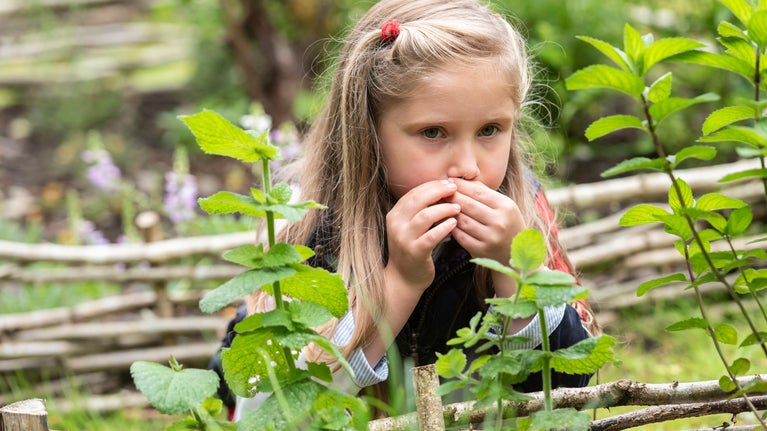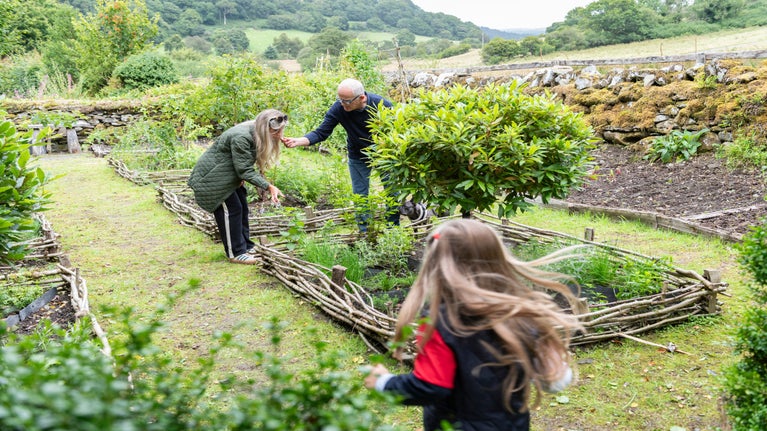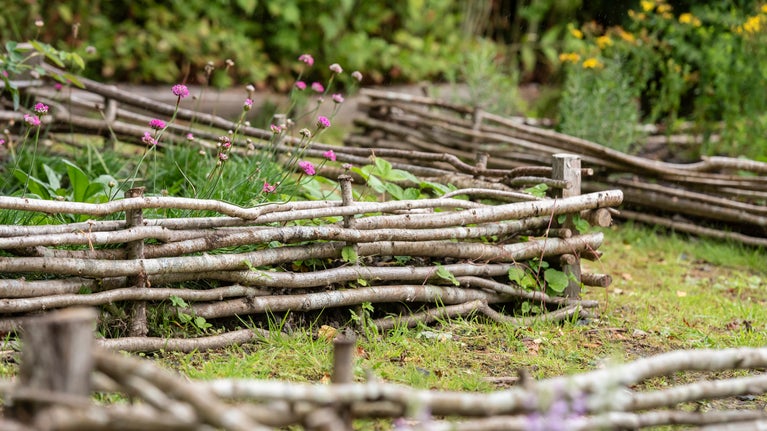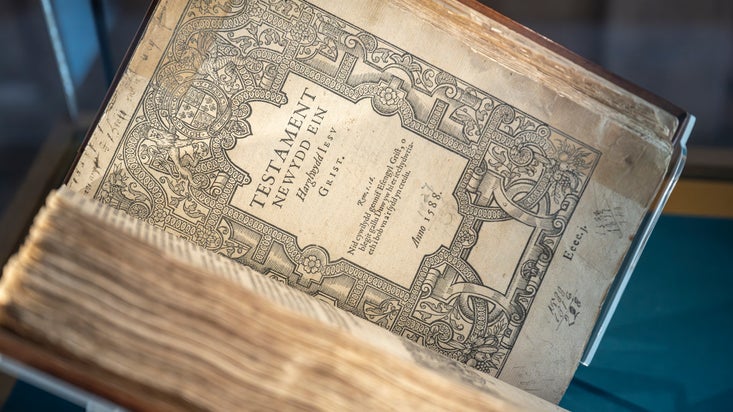
Discover more at Tŷ Mawr Wybrnant
Find out when Tŷ Mawr Wybrnant is open, how to get here, the things to see and do and more.

Every Tudor house would have had a small piece of land that would have been used as the house garden, providing food crops, medicinal herbs, strewing herbs and dyeing plants to keep the household fed and healthy all year round. Visit the Tudor garden at Tŷ Mawr Wybrnant and step back in time.
The existing design is consistent with research done into Tudor and Elizabethan gardens, and the planting comprises plants known to have been grown in that period. Consideration has been given to maximising year-round sensory appeal, whilst also featuring plants referenced in Shakespeare’s writings and The Bible, thus forming an additional connection with the history of the house and its occupants.
Click here to learn more about the recent work to renovate the garden.

This border has been subdivided into six vegetable beds, which is being planted in rotation in accordance with Tudor practice. Vegetables include crofters’ kale, iron age horse beans, leeks, beetroot and rhubarb.
This border is being dedicated to herbs used around the house. Some of these were used for washing and starching clothes - notably soapwort and lords and ladies - and dyeing fabric; alkanet roots produce a purple/red dye and dyer’s weld provides a yellow. Sweet-smelling plants, such as lavender, tansy and meadowsweet were also grown for the purpose of strewing floors, helping to disguise the smell of Tudor homes whilst often also repelling fleas and other pests.

The two small borders feature ‘decking herbs’ - those brought into the house – and those used for ‘tussie-mussies’ (or nosegays). Plants include hollyhocks, columbines and marigolds - and various ‘gillyflowers’ such as pinks and sea thrift.
The six central beds are being planted in geometric patterns with culinary, medicinal, cosmetic and magical herbs – including sage, self-heal and betony - many of which, according to the popular ‘Doctrine of Signatures’, were used to treat ailments of those body parts they most resembled. Lungwort speaks for itself, whilst comfrey was, for example, also known as ‘knitbone’ and ‘boneset’. Many plants were, however, used for a host of different purposes, and could feasibly feature in almost all categories.

Find out when Tŷ Mawr Wybrnant is open, how to get here, the things to see and do and more.
Learn more about Bishop William Morgan, the translator of the Bible into Welsh.
